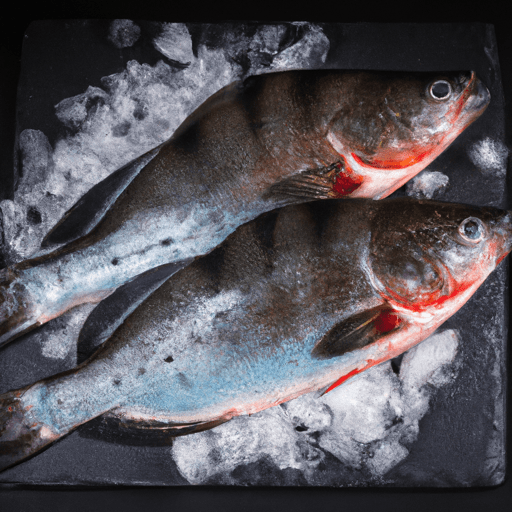All About Black Drum: A Delightfully Versatile Fish
Are you looking to explore new flavors in your seafood dishes? Look no further than the black drum! This elusive fish, also known as Pogonias cromis, is not only a prized catch for anglers but also a favorite in the culinary world. Its meaty texture, distinct taste, and a wide range of culinary applications make it a delightful addition to any seafood lover’s repertoire. So, let’s dive deep into the world of black drum and discover its wonders!
Taste and Texture
Black drum is hailed for its firm and meaty flesh, offering a unique taste that stands out among other fish varieties. With a mildly sweet flavor and a hint of brininess, it retains a mild earthiness that pairs well with a multitude of seasonings and ingredients. Its flesh is dense, making it perfect for grilling, pan-searing, or baking, as it holds up well without falling apart.
Culinary Applications
Versatility is the name of the game when it comes to cooking black drum. Whether you prefer bold, robust flavors or a more delicate touch, black drum can adapt to various culinary techniques and preparations. Here are some popular ways to enjoy this delicious fish:
Grilling: Black drum’s firm texture makes it an excellent candidate for grilling. Season it with your favorite spices, marinade, or a simple mix of olive oil, lemon juice, and garlic. The heat of the grill will enhance its flavors, giving it a slightly smoky and charred profile.
Pan-Searing: For a quick and crispy delight, pan-searing is the way to go. Season the fish with salt, pepper, and a sprinkle of paprika for added depth. Sear it in a hot skillet with a drizzle of oil, and let the exterior develop a delightful golden-brown crust while maintaining its moistness inside.
Baking: Baking black drum in the oven allows it to retain its moisture, creating a juicy and tender result. You can keep it simple with a lemon-herb butter sauce or get creative with complementary flavors like mango salsa or a cilantro-lime marinade.
Nutritional Value
In addition to being a culinary delight, black drum also boasts impressive nutritional benefits. Here’s a snapshot of what this fish has to offer:
Protein: Black drum is a great source of high-quality protein, essential for muscle repair and growth.
Omega-3 Fatty Acids: Like many other fish, black drum is rich in omega-3 fatty acids, which promote heart health and reduce inflammation.
Vitamins and Minerals: Black drum provides a range of vitamins and minerals, including vitamin B12, selenium, and phosphorus, contributing to overall well-being.
Fun Facts and History
Beyond its culinary prowess, black drum also holds some interesting historical and environmental significance. Here are a few captivating facts:
Size Matters: Black drum can grow to substantial sizes, with some individuals reaching over 100 pounds! These large creatures have a lifespan of up to 60 years.
Distinctive Drumming: The name “black drum” originates from the low drum-like sound these fish produce by vibrating their swim bladder. This unique characteristic serves purposes like communication and spawning rituals.
Old as Time: Black drum is believed to have inhabited the Earth for millions of years. Native Americans were known to have caught and consumed black drum, making it an ancient and culturally significant staple.
Time to Indulge!
Now that you’re armed with delightful ways to cook black drum and armed with knowledge about its taste, nutritional value, and interesting history, it’s time to bring this delectable fish to your plate. Whether you’re a seasoned seafood enthusiast or a novice in the kitchen, black drum offers an exciting culinary adventure that you won’t want to miss. So, head to your nearest seafood market or plan a fishing trip, and get ready to savor the flavors of the versatile black drum!
“Cooking is like love. It should be entered into with abandon or not at all.” - Harriet Van Horne
Black Drum
Origin: Black drum (Pogonias cromis) is a saltwater fish species that can be found along the Atlantic coast of North America, from Nova Scotia all the way to southern Florida. It is also present in the Gulf of Mexico.
Common Uses: Black drum is sought after for its delicious flesh, which has a mild and sweet flavor. It is often used in various culinary preparations, including grilling, baking, broiling, and frying. The fish is versatile and can be prepared in different ways, making it suitable for various recipes.
Nutritional Benefits: Black drum is a high-quality source of lean protein and is also rich in several essential vitamins and minerals. A 3-ounce serving of cooked black drum contains approximately 90 calories, 20 grams of protein, 1 gram of fat, and minimal carbohydrates. It is also a good source of omega-3 fatty acids, vitamin D, vitamin B12, selenium, and phosphorus.
Unique Properties: Black drum is known for its characteristic ability to produce a drumming or croaking sound, which it achieves by vibrating special muscles against its swim bladder. This sound is often heard during spawning, when groups of black drum gather in the same area. Additionally, young black drum usually have black vertical stripes on their sides, which fade as they grow larger.
Historical Significance: Black drum has been a popular fish species among recreational anglers for decades. Its large size, fighting strength, and good eating qualities have made it a sought-after game fish. In some regions, black drum have even been declared as state fish due to their significance in local culture and fishing traditions. Additionally, black drum holds cultural value in Cajun cuisine, where it is used in dishes like blackened fish or gumbo.




Use the share button below if you liked it.
It makes me smile, when I see it.